#Ashtanga Yoga School
Text
Get The Best Yoga Teacher Training In Kathmandu
At Nepal yoga teacher training, we Provides Yoga Teacher Training In Kathmanduwhich helps to transform one’s life towards peace bliss and happiness. Here you can enjoy our Authentic YTT, a combination of traditional and modern and fusion of Hatha/ Ashtanga yoga in Nepal with highly experienced yoga teachers in stunningly beautiful place of Nepal, Kathmandu. Visit our site: nepalyogateachertraining.com & call us at +977-9849521819.
#Yoga Training In Nepal#Yoga in Nepal#Yoga School in Nepal#Ashtanga Vinyasa in Nepal#Yoga Retreat Center#Meditation in Nepal
2 notes
·
View notes
Text
Get traditional and authentic yoga teacher training in Goa

It is undeniable fact that Yoga plays a key role in an individual’s life. It not only helps us to stay healthy by the body but also increases cognitive power. However, the right way of yoga exercise matters a lot because the right direction can give a fruitful outcome. Don’t worry Taps Yoga India is ready to help you. It is a certified yoga school that provides traditional and authentic yoga teacher training in Goa. At our school, we follow a modern approach with traditional yoga asanas. Through our teacher training programs, one can able to make themselves a professional yoga teacher. Our certification is globally accepted. So, if you want to learn yoga if the perfect manner then doesn’t hesitate to call us.
#Tapas Yoga#Yoga teacher training in Goa#Yoga TTC#Yoga school in Goa#Yoga Classes#Hatha Yoga#Ashtanga vinyasa#Yin Yoga
2 notes
·
View notes
Photo


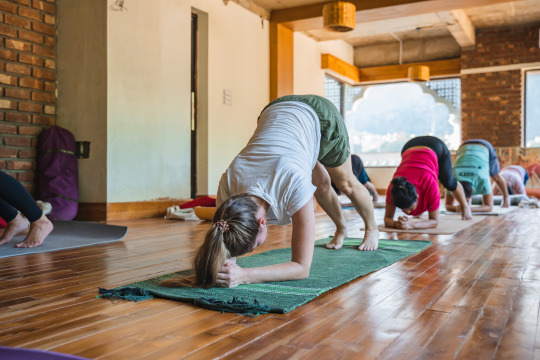

Our 20-day short yoga teacher training course is now enrolling.
Get started today and join us for next month's batch!
Starting from the 11th Of October
Visit: https://www.livingyogaschool.com/
#yogapractice#200houryogateachertraining#Kundalini yoga#yogajourney#Hatha yoga#yogaaesthetic#200houryogattc#300hourttc#healthylifestyle#Health & Fitness#yogafitness#yogafun#fitness#kundalini yoga school#ashtanga yoga#yogahealthystart#yogaholidays#yogaholic#yogajourny#healthlifestyle#healthyeating#bestyogaschool#yogaschoolinindia#yogaschoolinrishikesh#yogainindia#yogalife#yogastudents
4 notes
·
View notes
Text
Enroll In The Best 200-Hour Ashtanga Yoga Teacher Training In Rishikesh

Almost everyone wishes to experience serenity in their life. The art of yoga can be a good solution. People are realizing that yoga can be a way to integrate mind, body, and soul. This is where Rishikesh attracts yoga seekers from around the world every year to soak up all yogic benefits. Join 200-Hour Yoga Teacher Training in Rishikesh and experience a transformative journey.
Undoubtedly, yogic science brings immense benefits. People from all over the world are turning to Rishikesh, India to explore the art of yoga. They are taking part in Yoga Teacher Training Courses.
Why Ashtanga Yoga Teacher Training in Rishikesh?
A Haven for Yogis-
Rishikesh is indeed renowned as the yoga capital of the world. It boasts calm surroundings, vibrant culture and spiritual heritage that create a perfect backdrop for yoga practice. There are several yoga schools offering comprehensive teacher training programs.
Dive into Ashtanga Yoga-
A reputed Rishikesh Yoga School offers the best Ashtanga Yoga Teacher training. When it comes to Ashtanga Yoga, it is a system of yoga that contains lists of many different groupings of asanas, as well as highly original teachings on vinyasa, drishti, bandhas, mudras, and philosophy”. Ashtanga yoga literally means “eight-limbed yoga.
In addition, Ashtanga Yoga is a dynamic and powerful form of yoga. To perform asana correctly in Ashtanga yoga, you must incorporate the use of vinyasa and tristhana. Altogether, it offers a structured and disciplined approach to practice. Professional yoga teachers will guide you to embrace physical strength, mental clarity and spiritual awakening.
What To Expect From Ashtanga Yoga Teacher Training?
Intensive Practice Sessions-
During your training, you will attain daily intensive sessions, led by experienced instructors. Rest assured these meticulously designed yoga sessions will allow you to explore Ashtanga Yoga precisely and discover your true potential.
Individualized Guidance-
You can rest assured of personalized guidance and support during your training sessions. Reputed and reliable Rishikesh Yoga Schools employ certified and trained instructors to deal with the students. Both beginners and experienced practitioners can make the most out of it. These tailored programs will meet your unique needs and goals.
Immersive Experience-
Reliable Rishikesh Yoga Schools ensure an immersive experience. Along with your Yoga Teacher Training in Rishikesh, you will explore various sacred sites and outdoor activities. Also, you will be connected with like-minded people from around the world and share your passion for yoga.
Embarking on an Ashtanga yoga teacher training in Rishikesh, is more than just a course. What you are waiting for? Looking for a reliableRishikesh Yoga School? We are your right stop. Join us and enroll today.
Yogacharya Yashpal Ji-Founder | Ashtanga & Vinyasa Instructor-
YogiYashpal Rautela is the Best Ashtanga Yoga Teacher in Rishikesh. He is also the founding director of Rishikesh Vinyasa Yoga School. He is a gold medalist and multiple medal winner in numerous state, national, and international yoga championship events. He has been teaching for five years and is a master of the Primary series of Ashtanga-style vinyasa flow yoga. He has an excellent knowledge of vinyasa flow style yoga. He is a registered yoga teacher (RYT) from Yoga Alliance USA. Yogi has a Masters Degree in Yoga Science from Uttarakhanda Sanskrit University in Haridwar.
Visit www.rishikeshvinyasayogaschool.com today!
Resources : https://rishikeshvinyasayogaschoolttc.blogspot.com/2024/03/enroll-in-best-200-hour-ashtanga-yoga.html
#Ashtanga yoga#yoga#yoga teacher#vinyasa yoga#yoga school#rishikesh yoga school#rishikeshvinyasayogaschool#rishikesh yoga#rishikesh yttc#vinyasa yoga teacher training
0 notes
Text

Yoga Teacher Training School in Rishikesh, India 100, 200, 300hr YTTC
#Yoga Teacher Training School in Rishikesh#India 100#200#300hr YTTC#Hatha#Ashtanga#Vinyasa#Iyengar#Asana#Yoga#Ayurveda#Meditation#Retreats
0 notes
Link
There are numerous and varied advantages of yoga for mental health. There is no denying that yoga may be a potent tool for managing mental health, from lowering stress and anxiety to enhancing sleep quality. We strongly advise you to try yoga if your mental health is a problem. It might be exactly what you need to bring harmony and tranquility into your life.
You can also join us for yoga retreat in Rishikesh or yoga teacher training in Rishikesh.
#yoga for mental health#yoga school in rishikesh#ashtanga yoga retreat india#yoga teacher training in rishikesh#200 hour yoga teacher training in rishikesh
0 notes
Text
A best Hatha, Vinyasa and Ashtanga Yoga course specially designed for beginners for deeper understanding of yogic life .
We also provide 200 hour Yoga alliance USA certificate after finishing our Yoga course.
to know more details, please feel free to visit our website:-
Whatsapp us - +918923426881
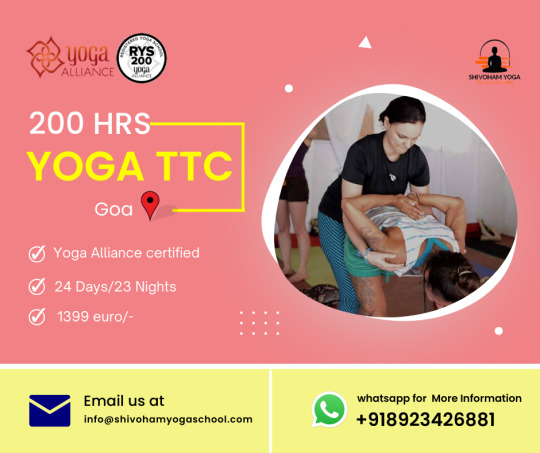
#yoga teacher training in goa#yoga course in goa#yoga training in goa#yoga school in goa#yoga school goa#yoga training goa#yoga in goa#yoga ttc in goa#ashtanga yoga in goa#vinyasa yoga in goa#shivoham yoga school#200 hour yoga teacher training in goa#200 hour yoga course in gioa
0 notes
Text
0 notes
Text
Words by our Founders Oorjayii Yoga was created to provide a welcoming and safe space for people. We started with sharing circles and self-love yoga retreats, inviting healers and organizing workshops to promote balance, love, and mindfulness. Along the way, we noticed a growing disconnection in the world, especially due to modern lifestyles. Our vision expanded to include teaching yoga in schools, instilling kindness and mindfulness from a young age. As we progressed, we recognized the need for more teachers, or "Gurus," who could guide others out of darkness and into light. Our goal at Oorjayii Yoga is to train teachers who can facilitate personal growth. We offer individual attention, focusing on teaching skills, philosophy, anatomy, and the development of each person's inner teacher. The journey as a yoga teacher truly begins when one steps into the world to teach, whether for self-exploration or to guide others. Yoga brought a big change in both of our lives and that makes us more eager to bring change in other's lives who are in need of help. Any help to bring that change is always welcomed. You can reach us if you wish to be the part of our journey. We would love to hear from you :)
#yogastudent#meditation#yogaretreat#yogateachertraining#yogatraining#love#yoga#healthylifestyle#vinyasa#nature#yoga retreat#india#health & fitness#health#wellness#wellbeing#nutrition#beach#goa#spiritual practitioner#practice#yogi#yogini#personal
32 notes
·
View notes
Text
A Short Introduction to the Yoga Sutras

The Yoga Sutras are generally considered a foundational text of the yoga tradition. In this article we examine the context and background of the text, briefly explore its structure and content, and I also offer some reflections on the text’s relevance in modern times.
Note: I have decided not to use diacritics in this article. Diacritics are those little lines and dots above and below letters that tell you how to pronounce Sanskrit words. Normally I use diacritics in my writing, as they are essential for pronouncing Sanskrit correctly. However as this article is meant for non-scholars I have decided it would be better to try and write the Sanskrit words in a way that will make them easy to read and pronounce, so as not to put anybody off!
History & Context
Most scholars these days date the Yoga Sutras to somewhere between the 2nd and 5th centuries CE, with Philipp Maas placing it in the early 5th century.
The text is attributed to a sage named Patanjali. Biographically, we know next to nothing about Patanjali. The name is a compound word formed from the Sanskrit words pata (falling, flying) and anjali (the gesture of joining the hands together in reverence).
Yoga had already been around in some form or another for many centuries by this point. Therefore, Patanjali did not ‘invent’ Yoga. Nevertheless, this is the earliest comprehensive and systematic text on the subject that has survived.
Yoga was just one darshana or school out of many in ancient India. In terms of philosophy, it shares many similarities with the Samkhya school. But whereas Samkhya tends to emphasise the use of reason and knowledge to gain liberation, Yoga emphasises practical and experiential methods.
Philosophically, both the Samkhya and Yoga schools teach a form of dualism. This is a dualism between purusha (our true Self) and prakriti (everything else, including the body and mind) and the whole point of Samkhya and Yoga in a nutshell is to guide us towards the realisation of purusha, that is, our true Self. This is true liberation or moksha in Yoga.
Most of the ancient darshanas had their own sutra text. Sutra texts are known for their brevity. Basically, sutra texts are where the most essential teachings of a school are distilled into as few words as possible. Knowledge systems were handed down orally in ancient India and thus source material was kept minimal with a view to facilitating memorisation.
Other authors would then come along and write longer commentaries on these sutra texts. The Yoga Sutras have a rich commentarial tradition spanning many centuries. The first and most well known is the bhasya commentary by a certain Vyasa. Vyasa actually means something like ‘compiler’ or ‘editor’ so that probably wasn’t his actual name!
Some scholars even argue that Patanjali and Vyasa are actually one and the same person, though others would strongly disagree with this thesis. Either way, this commentary is indispensable when it comes to making sense of the sutras, and published versions of the Yoga Sutras tend to include the bhasya commentary or at least reference it.
As a final note, many scholars now use the term pātañjalayogaśāstra to refer to this text as a whole (sutras plus commentary), because that is the name our oldest existing manuscripts use. But to keep things simple we will continue to use the name Yoga Sutras!

Structure of the Text
The Yoga Sutras are divided into the following four padas or chapters:
Samadhi Pada: This is where Patanjali defines Yoga and then describes the nature and the means to samadhi, the goal of Yoga.
Sadhana Pada: Sadhana is the Sanskrit word for practice or discipline. Here the author outlines two forms of Yoga, the kriya yoga (yoga of action) and the ashtanga yoga (the yoga of eight auxiliaries or limbs). This is also where Patanjali discusses the kleshas, five ‘afflictions’ or impediments to Yoga.
Vibhuti Pada: Vibhuti is the Sanskrit word for power or manifestation. Supra-normal powers (siddhis) are said to be acquired by the practice of Yoga. However, the temptation of these powers should be avoided and the attention should ultimately be fixed only on liberation.
Kaivalya Pada: Kaivalya literally means isolation. This is the chapter on final liberation. The Kaivalya Pada describes the process of liberation, it explains how the mind is constructed and veils the inner light of the Self.
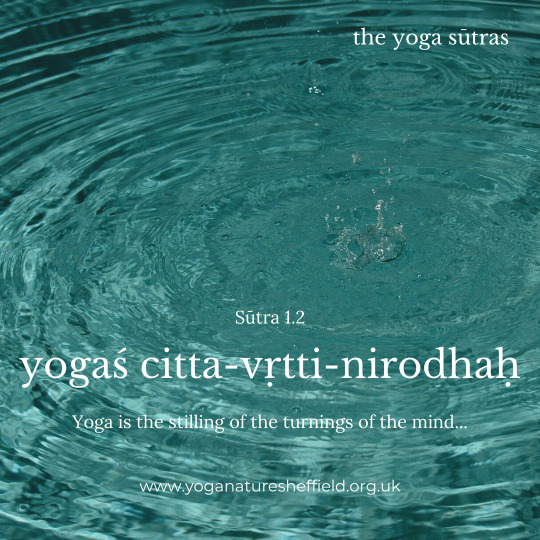
The Goal of Yoga
Not one for a lengthy preamble, Patanjali gets stuck right in there and clearly states the goal of Yoga in the well-known second sutra:
yogas chitta-vritti-nirodhah YS 1.2
Any Sanskrit sentence allows for a number of possible translations and this one is no different. A nice and accurate one is this one from Barbara Stoler Miller:
Yoga is the cessation of the turnings of thought
The reason I say this one is accurate is because a literal meaning of vritti is ‘turning’. Ever felt that thoughts are ‘going round and round’ in your head? Well this phrase nicely captures that! The vrittis in this statement refer to thoughts, emotions, ideas and basically any cognitive act of the mind. Patanjali lists five types of vrittis. These are, once translated:
Right knowledge
Error or false knowledge
Imagination
Sleep &
Memory
All such activities of the mind are products of prakriti and are completely distinct from the true Self, purusha, that pure awareness or consciousness which we are aiming to enter into through Yoga. The means prescribed by Patanjali in the first chapter of the Yoga Sutras to still the vritti states of mind are sustained practice (abhyasa) and dispassion (vairagya).
Specifically the practice offered is meditation, or keeping the mind fixed on any particular object of choice without distraction. Patanjali then describes a number of possible forms such meditation could take. By stilling all thought, meditation removes all objects of awareness. Awareness can therefore now be aware only of itself, of its own source, the true Self or purusha. This state is known as samadhi in Yoga and Patanjali makes it super clear that this state of samadhi is the goal of Yoga and thus the whole text is focused upon achievement of that goal.

Obstacles to Yoga
Patanjali mentions five kleshas, which can be translated as impediments or obstacles to achieving samadhi and thus Yoga. These five are as follows:
Ignorance
Ego
Desire
Aversion
Clinging
In the Yoga Sutras, and indeed in ancient Indian philosophy in general, the first item in any list is the most important and fundamental. It’s the same here. Ignorance here means failing to recognise our true Self or purusha and instead identifying ourselves with our body, mind and the material world. All of the other obstacles arise from this fundamental error.
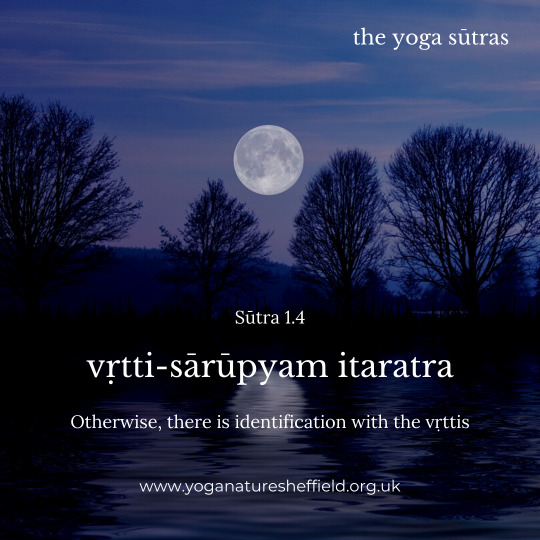
Yoga Psychology
Like most other schools of Indian thought, the Yoga school believed in the related concepts of karma and rebirth. According to this doctrine, we are caught in an endless cycle of rebirths called samsara and the purpose of following a path such as Jainism, Buddhism or Yoga is to bring an end to this cycle. Where the Yoga Sutras really shine are in interpreting this doctrine in a highly sophisticated ‘psychological’ way, to use modern terminology.
According to this Yoga psychology, the mind forms an impression of an object through the sense organs, which is called a pratyaya. Once this pratyaya or active image of this object is no longer of active interest to the mind, it becomes an inactive or latent samskara. A samskara is an imprint left in the chitta, somewhat like a sound is imprinted on a tape recorder, or an image on photographic film. In this way the vrittis, the activities of the mind, are retained as samskaras when they fade.
It is important to note that these samskaras are not just passive imprints but vibrant latent impulses that can get activated under conducive circumstances and can exert influence on a person’s thoughts and behaviours, even many years after the impression was made. What’s more, according to Yoga these samskaras can persist from previous lives. The chitta is thus something of a storehouse of these recorded samskaras, deposited and accumulated there over countless lifetimes. One is here reminded of the theory of the subconscious in modern psychoanalysis.
According to Yoga, karma is generated by the vrittis, and the vrittis, in turn, are produced by the kleshas. There is thus a vicious cycle of kleshas, vrittis and samskaras. To run through the whole cycle again to try and make it as clear as possible: vrittis are recorded in the chitta as samskaras, and these samskaras eventually activate consciously or subliminally, producing further vrittis. These vrittis then provoke actions and reactions, which in turn are recorded as samskaras, and the cycle continues endlessly, leading to much suffering along the way.
The whole Yoga project aims to bring this vicious cycle to an end and it is liberation from this mind created suffering that we are after as yogis. The Yoga Sutras are effectively a manual guiding us towards this end, this state of samadhi or complete meditative consciousness.
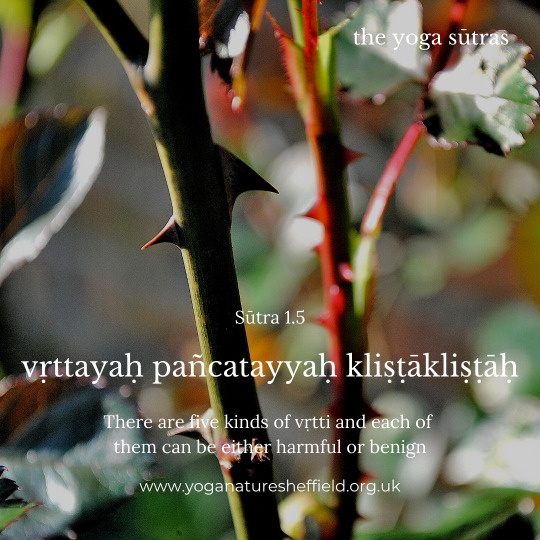
The Yamas and Niyamas
The second pada or chapter of the Yoga Sutras contains a famous exposition of five ethical restraints (yamas) and five ethical observances (niyamas) and these are relatively well-known in the modern yoga world. The first thing to get clear is that these yamas and niyamas are NOT original or unique to Yoga. All ascetic schools in ancient India had these ethical codes, and the exact same ones appear in Jainism for example. Sometimes, you even get more of them. Some yoga texts for instance list 10 yamas and 10 niyamas.
The five yamas listed in the Yoga Sutras are:
Ahimsa (non-harming)
Satya (truth telling)
Asteya (non-stealing)
Brahmacharya (chastity or celibacy)
Aparigraha (non-acquisitiveness)
The five niyamas are:
Shauca (purity or cleanliness)
Santosha (contentment)
Tapas (self-discipline)
Svadhyaya (study)
Ishvarapranidhana (devotion to the Ishvara or Lord)
Many of these could do with further explanation and commentary but there is not space in this present article. The other thing I want to stress is that these yamas and niyamas were not seen as optional extras for yogis. Rather, these were the bedrock of fruitful yoga practice. Patanjali and others refer to them as the mahavratam or ‘great vow’. Importantly, having listed the yamas, Patanjali devotes an entire sutra to reiterating just how central and non-negotiable these yamas are. Once translated, this sutra reads as follows:
[These yamas] are considered the great vow. They are not exempted by one’s class, place, time or circumstance. They are universal. YS 2.31
So, regardless of your social status, regardless of where you live, in which time period you live, and any other extenuating circumstances (such as your career), adherence to the yamas, including especially ahimsa, the foundation of them all, is an essential part of being a yogi as defined by Patanjali’s system.
Vyasa is even more emphatic in his bhasya commentary to the Yoga Sutras, and it is here that the link between ahimsa and vegetarianism is explicitly and unequivocally made, and several examples are brought to bear. Refer to the work of scholar Jonathan Dickstein to read more about the strong case for vegetarianism made in Patanjali Yoga.
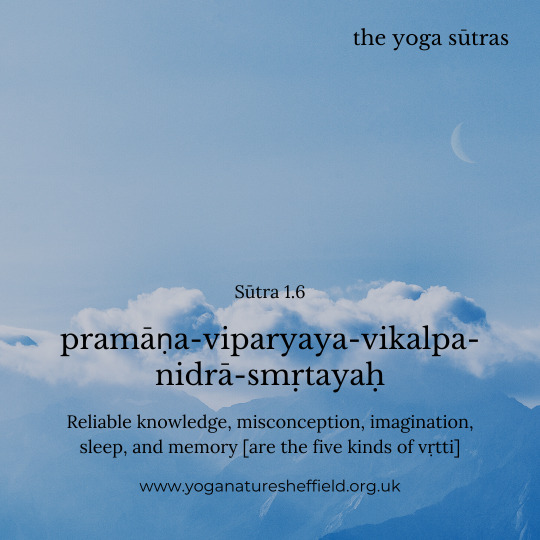
The Ashtanga Yoga
These yamas and niyamas are just the first two parts of Patanjali’s famous ashtanga or eight-part path. I would first like to clarify that this systematisation of yoga into a series of angas (a word translated by some modern scholars as ‘auxiliaries’ but more commonly rendered as ‘limbs’) was again not novel to Patanjali. Throughout the yoga tradition we find various similar schemes, predating and postdating Patanjali, including fourfold, fivefold, sevenfold and even fifteenfold schemes. I would also like to stress that, despite sharing the same name, this ashtanga yoga bears little relation to the modern postural form of yoga known as Ashtanga.
Following the yamas and niyamas then, we then have the following six angas:
Asana (posture): At last I hear you cry, postures! In Patanjali’s day meaning a steady and comfortable seated posture, asanas today comprise a set of physical exercises which stretch and strengthen the body. It is this aspect of yoga that has been most visibly exported to the West but too often stripped from its context as just one ingredient in a more ambitious and far-reaching sequence.
Pranayama (breath control): Prana refers to the universal life force whilst ayama means to regulate or control, but it can also mean to expand and lengthen. Prana is the vital energy needed by our physical and subtle layers, without which the body would perish. It is what keeps us alive. Pranayama is thus the control or expansion of prana through the breath, depending on which definition of ayama you use.
Pratyahara (withdrawal of the senses): This limb further deepens the above process by removing consciousness from all engagement with the senses (sight, sound, taste, smell and touch) and sense objects.
This is followed by the final three limbs collectively known as samyama: Dharana (concentration, fixation), Dhyana (meditation), and finally Samadhi (the latter of which Patanjali further divides into seven rather esoteric stages). These last three limbs are essentially different degrees of concentrative intensity and culminate in the realisation by the Self of its own nature.
Just to reiterate one more time, it is this Self-realisation, the state known as samadhi, that is the true goal of Yoga.
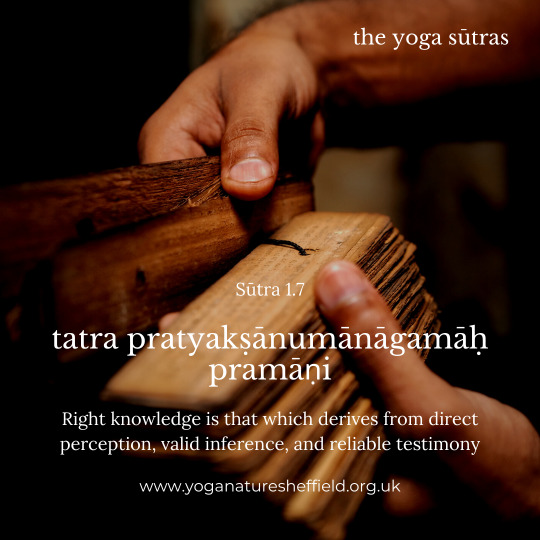
Relevance of the Yoga Sutras for Today
In this brief introduction we have of course only scratched the surface of this incredible text, and there is much more that could be said. But for now I want to end with some concluding reflections on the continuing relevance of the Yoga Sutras in the modern world.
One question that arises is whether Patanjali was prescribing a strictly ascetic path. And indeed, the general scholarly consensus has usually been to associate Patanjali's Yoga exclusively with extreme asceticism, mortification, denial and renunciation. However, there are dissenting vocies. For example, Ian Whicher has repeatedly and passionately argued that Patanjali's Yoga can be seen as enabling a more responsible living in and engagement with the world, and that Patanjali was not advocating total renunciation. For Whicher, following the path of Patanjali can lead one towards that integrated and embodied state of liberated selfhood whilst living, a state known as jivanmukti.
Regardless of whether Patanjali was historically preaching ascetism or not, the fact remains that the Yoga Sutras are full of valuable ideals and tools for the practitioner living in the modern world. Let’s face it though, this is a challenging path. As a scholar and practitioner I often perceive a huge disconnect between the kind of yoga I am seeing on the likes of Instagram and the teachings of the Yoga school as presented in the Yoga Sutras. After, all, the former is highly focused on body image, whereas the Yoga of Patanjali is all about dissociating ourselves from our body and mind and recognising our true Self. However, this does not mean that the two are necessarily irreconcilable.
Though there is absolutely no historical evidence that Patanjali and his followers were practicing postural yoga (that didn’t come until later with the emergence of the Hatha tradition) nowhere in the Yoga Sutras does it say that physical exercise cannot be part of one’s yoga practice. We just have to remember that as far as Patanjalian Yoga is concerned, such postural activity is just a further means or method on the path towards samadhi or full meditative awareness. This is why any so-called yoga that does not contain more internalised meditational practices but which focuses solely on physical exercise should not really be called yoga.
The Yoga Sutras remains undoubtedly the most famous ancient yoga text, and it is studied to some extent in probably every yoga teacher training course. To be honest, I personally feel that too much emphasis is placed on the Yoga Sutras, at the expense of other branches and other texts of the tradition. The Tantric texts, in particular, are still sorely neglected. One of my own aims in my work is to try and decentre the Yoga Sutras and provide a much wider overview of the history and philosophy of yoga and the other related schools of ancient India. This is not to take anything away from the Yoga Sutras, however, as it is without doubt an extraordinary text that continues to be highly relevant in the 21st century.
Further Reading
I have already mentioned some scholars whose work you may wish to refer to, such as Philipp André Maas, Ian Whicher and Barbara Stoler Miller. For a translation and commentary on the Yoga Sutras that is both scholarly accurate and reasonably accessible I would recommend that of Edwin Bryant published by North Point Press.
7 notes
·
View notes
Text
Merry Christmas ⛄🎄 and a Happy New Year 2024. 🎊
Rishikesh Nath Yogshala is offering discounts on its yoga teacher training courses this time to celebrate Christmas and New Year.
Book On 200 Hour & 300 Hour Yoga Teacher Training Course and Get Instant Off.😍
200 Hour - 5% Off
300 Hour - 10% Off
🧘 200 Hour Yoga TTC Price:-
💲679 USD (Quad Room)
💲739 USD (Shared Room)
💲899 USD (Private Room)
🧘2𝟎𝟎 𝐇𝐨𝐮𝐫 𝐘𝐨𝐠𝐚 𝐓𝐓𝐂 Date:-
🗓️1st & 15th Of Every Month.
🧘 300 Hour Yoga TTC Price:-
💲899 USD (Quad Room)
💲999 USD (Shared Room)
💲1099 USD (Private Room)
🧘 300 𝐇𝐨𝐮𝐫 𝐘𝐨𝐠𝐚 𝐓𝐓𝐂 Date:-
🗓️ 1st Feb 2024.
🗓️ 15th March 2024.
🧘𝐘𝐨𝐠𝐚 𝐓𝐓𝐂 Course included:-
✔️Ashtanga & Hatha Yoga Classes.
✔️Vinyasa Yoga Flow.
✔️Body Alignment & Anatomy.
✔️Sound Healing & Meditation.
✔️Kriya & Sat karma.
✔️Food & Accommodation.
☎️C𝐚𝐥𝐥/𝐰𝐡𝐚𝐭𝐬𝐚𝐩𝐩: +91 7830602777.
📩E-𝐦𝐚𝐢𝐥: [email protected]
🌐W𝐞𝐛𝐬𝐢𝐭𝐞 : Registered Yoga School - RYS 200 & 300 - Rishikesh Nath Yogshala
.
.
.
.
.
#yoga #yogalove #yogateachertraining #yogateachertraininginrishikesh #yttc #yttcindia #yogateachertraining #rishikeshyoga #yogateacher #200houryogateachertraining #200houryogattc #200hrytt #200hourteachertraining #200houryogateachertraininginrishikesh #300houryogateachertraining #300houryttc #300houryogateachertraininginrishikesh #300houryttc #300houryttcinrishikesh #300houryttcinindia #yogainrishikesh #yogainindia #yogateachertraininginindia #nathyogshala #rishikeshnathyogshala #rishikeshnath #yognagririshikesh #rishikeshyognagri

2 notes
·
View notes
Text
How Yoga Teacher Training in Thailand Can Transform Your Life
Photo by hathayogaschool on Pixabay
Are you ready to take your passion for yoga to the next level? Look no further than yoga teacher training in Thailand. This transformative experience will not only deepen your practice but also unlock your full potential as a yoga teacher. Imagine immersing yourself in the serene landscapes of Thailand, surrounded by like-minded individuals, and learning from experienced instructors who have dedicated their lives to the art of yoga.
Thailand, known for its vibrant culture and stunning natural beauty, provides the perfect backdrop for this life-changing journey. By enrolling in a yoga teacher training program, you will gain a comprehensive understanding of yoga philosophy, anatomy, and teaching techniques. You will also have the opportunity to practice and refine your own skills under the guidance of skilled mentors.
The Benefits of Becoming a Certified Yoga Teacher
Becoming a certified yoga teacher offers a multitude of benefits, both personally and professionally. Firstly, it deepens your own practice, allowing you to explore different styles and techniques in more depth. As you delve into the philosophy and history of yoga, you will develop a deeper connection with your own body, mind, and spirit. This enhanced self-awareness will enable you to tap into the transformative power of yoga and unlock your full potential.
Furthermore, yoga teacher training equips you with the knowledge and skills to share your love for yoga with others. You will learn effective teaching methodologies, proper alignment and adjustments, and how to create a safe and supportive environment for your students. Teaching yoga not only allows you to inspire and guide others on their own yoga journey but also provides a fulfilling and rewarding career path.
Why Choose Thailand for Yoga Teacher Training?
Thailand has become a popular destination for yoga teacher training, and for good reason. The country's unique blend of vibrant culture, warm hospitality, and breathtaking natural landscapes create the ideal environment for self-discovery and transformation. Whether you choose to train in a bustling city or on a tranquil beach, Thailand offers a diverse range of training locations to suit every individual's preferences.
In addition, Thailand is home to numerous renowned yoga schools and retreat centers that attract experienced instructors from around the world. These instructors bring their wealth of knowledge and expertise to the training programs, ensuring that you receive top-quality education and guidance. The vibrant yoga community in Thailand also provides ample opportunities to connect with like-minded individuals, fostering a supportive and inspiring learning environment.
The Top Yoga Teacher Training Programs in Thailand
When it comes to choosing a yoga teacher training program in Thailand, you are spoilt for choice. Here are a few of the top programs that consistently receive rave reviews:
Samahita Retreat - Located on the pristine island of Koh Samui, Samahita Retreat offers a comprehensive 200-hour yoga teacher training program. With a focus on breath-centered yoga, this program combines traditional Hatha and Vinyasa styles, ensuring a well-rounded education. The serene environment, nutritious meals, and onsite accommodation make it a popular choice for those seeking a transformative experience.
The Yoga Barn - Nestled in the artistic town of Chiang Mai, The Yoga Barn offers a variety of training programs, including a 200-hour multi-style yoga teacher training. Here, you will have the opportunity to learn from experienced local and international instructors, explore different yoga styles, and immerse yourself in the rich cultural heritage of Northern Thailand.
Absolute Sanctuary - Located on the tropical island of Koh Samui, Absolute Sanctuary offers an intensive 200-hour yoga teacher training program that focuses on Ashtanga Vinyasa and Hatha yoga. The program combines practical training, theoretical study, and personal development, providing a holistic approach to yoga education. The beautiful surroundings and luxurious accommodations make it an ideal destination for those seeking a transformative and rejuvenating experience.
What to Expect During a Yoga Teacher Training Program
Embarking on a yoga teacher training program is a life-changing experience that requires dedication, commitment, and an open mind. Here is a glimpse of what you can expect during your training:
Intensive Study and Practice - A yoga teacher training program typically involves a rigorous schedule of daily yoga classes, meditation sessions, and lectures on yoga philosophy, anatomy, and teaching methodologies. You will be expected to immerse yourself fully in the training, both physically and mentally.
Hands-on Teaching Experience - Throughout the program, you will have the opportunity to practice teaching and receive feedback from experienced instructors. This practical experience is invaluable in developing your teaching skills and building confidence as a yoga teacher.
Self-Reflection and Personal Growth - Yoga teacher training is not just about physical practice and teaching techniques; it is also a journey of self-discovery and personal growth. You will be encouraged to explore your own beliefs, values, and limitations, allowing you to break free from self-imposed barriers and embrace your true potential.
Community and Support - One of the most rewarding aspects of yoga teacher training is the sense of community and support that develops among participants. You will forge deep connections with like-minded individuals who share your passion for yoga, creating a supportive network that extends far beyond the duration of the training program.
The Transformational Journey of Yoga Teacher Training
Yoga teacher training is a transformative journey that goes beyond the physical practice of yoga. It is a journey of self-discovery, personal growth, and empowerment. As you delve deeper into the philosophy and teachings of yoga, you will begin to unravel layers of conditioning and limiting beliefs, opening yourself up to new possibilities and perspectives.
Through the practice of asanas (yoga poses), pranayama (breathing exercises), and meditation, you will develop a heightened sense of self-awareness and mindfulness. This newfound awareness will extend beyond the yoga mat and permeate every aspect of your life, enabling you to navigate challenges with grace and find greater joy and fulfillment.
Yoga teacher training also cultivates qualities such as compassion, patience, and empathy. As you learn to guide and support others on their yoga journey, you will develop a deeper understanding of human nature and the interconnectedness of all beings. This heightened sense of empathy will not only enhance your relationships but also enable you to make a positive impact on the lives of those around you.
The Importance of Self-Care During Yoga Teacher Training
While yoga teacher training can be an incredibly rewarding experience, it can also be physically and mentally demanding. It is therefore crucial to prioritize self-care throughout the training program. Here are some tips to help you take care of yourself during this transformative journey:
Listen to Your Body - Pay attention to any signs of fatigue or discomfort and modify your practice accordingly. Rest when needed and honor your body's limits.
Nourish Your Body - Maintain a balanced diet, eat nutritious meals, and stay hydrated. Proper nutrition will support your physical and mental well-being throughout the training.
Rest and Relaxation - Make time for rest and relaxation to recharge your energy levels. Incorporate activities such as meditation, gentle stretching, and leisurely walks into your daily routine.
Connect with Nature - Take advantage of Thailand's stunning natural landscapes by spending time outdoors. Connect with the healing power of nature and allow it to rejuvenate your mind, body, and spirit.
Seek Support - Don't hesitate to reach out to your instructors or fellow participants for support and guidance. They are there to help you navigate any challenges you may encounter during the training.
Remember, self-care is not selfish; it is a necessary component of your overall well-being. By taking care of yourself, you will be better equipped to serve and support others as a yoga teacher.
Tips for Choosing the Right Yoga Teacher Training Program in Thailand
With numerous yoga teacher training programs available in Thailand, choosing the right one can be a daunting task. Here are some tips to help you make an informed decision:
Accreditation and Certification - Ensure that the program is accredited by a recognized yoga alliance, such as the Yoga Alliance. This accreditation ensures that the program meets certain standards of quality and professionalism.
Instructors and Curriculum - Research the qualifications and experience of the instructors. Look for programs that offer a well-rounded curriculum that covers all aspects of yoga, including philosophy, anatomy, and teaching methodologies.
Reviews and Testimonials - Read reviews and testimonials from past participants to get a sense of their experiences and satisfaction with the program. This will give you valuable insights into the quality and effectiveness of the training.
Location and Environment - Consider the location and environment in which the training takes place. Choose a location that resonates with you and provides the atmosphere and surroundings that will enhance your learning experience.
Cost and Duration - Take into account the cost and duration of the program. Compare prices and ensure that the program offers good value for money. Consider your personal commitments and choose a program that fits within your schedule.
By considering these factors and trusting your intuition, you can find the perfect yoga teacher training program in Thailand that aligns with your goals and aspirations.
Testimonials from Past Participants of Yoga Teacher Training in Thailand
"My yoga teacher training in Thailand was truly life-changing. The serene environment, knowledgeable instructors, and supportive community created the perfect space for self-discovery and growth. I left the training with a deep understanding of yoga philosophy and a newfound sense of purpose. I am now teaching yoga full-time and couldn't be happier." - Sarah
"Training in Thailand was a dream come true. The beautiful beaches, vibrant culture, and incredible food made the experience even more memorable. The program was intense, but the instructors were incredibly supportive and helped me develop the confidence to teach. I highly recommend yoga teacher training in Thailand to anyone seeking a transformative journey." - Mark
"I had been practicing yoga for years but felt stuck in my personal practice. Yoga teacher training in Thailand provided me with the tools and knowledge to take my practice to the next level. The program challenged me physically, mentally, and emotionally, but the growth I experienced was invaluable. I am forever grateful for this life-changing experience." - Emily
Conclusion: Embracing Your Full Potential Through Yoga Teacher Training
Yoga teacher training in Thailand offers a unique opportunity to deepen your practice, gain a comprehensive understanding of yoga philosophy, and unlock your full potential as a yoga teacher. The serene landscapes, vibrant culture, and experienced instructors create the perfect environment for self-discovery and transformation.
By embarking on this transformative journey, you not only enhance your own well-being but also have the opportunity to positively impact the lives of those around you. Whether you aspire to teach yoga professionally or simply wish to deepen your personal practice, yoga teacher training in Thailand is the perfect avenue to discover your true potential.
So, why wait? Take the leap, embrace the transformative power of yoga, and unlock your full potential through yoga teacher training in Thailand. Your journey awaits.
2 notes
·
View notes
Photo
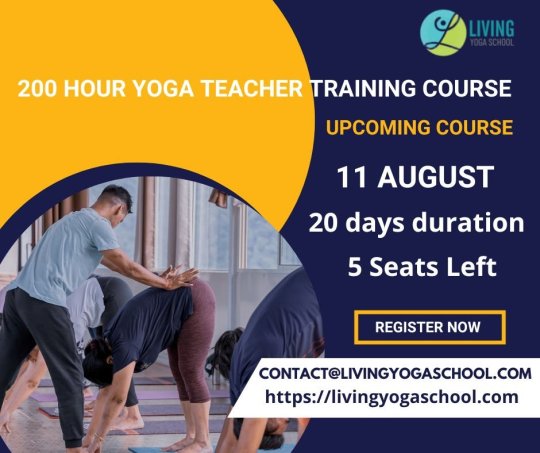
Don't miss this opportunity to take your yoga practice to the next level. Register now!
visit: https://livingyogaschool.com/
#yogapractice#hathayoga#kundaliniyoga#200houryogattc#healthymind#meditation#yogaflow#fitness#yogaforbeginners#yogalove#yogalife#namaste#ashtanga yoga#india#bestyogaschool#yogainrishikesh#yoga school in rishikesh#yogaforeveryone#yogi#yogini#yogafit#asana#yogapose#yogahapiness#photographylover#yogastrong#yogagrl#yogabalance
0 notes
Text
How to Enroll at Rishikesh Vinyasa Yoga School for 200 Hour 300 Hour and 500 Hours yoga teacher training

Looking for an ideal destination for yoga teacher training? Rishikesh is your right stop. Many spiritual seekers visit this place every year. A few reputed yoga schools offer the best yoga teacher training programs. Look for a reputed Rishikesh Yoga School that suits your needs.
When it comes to yoga, it is a way of life. Rishikesh boasts a tranquil ambiance that makes a perfect setting for self-reflection and inner peace. Many admired yoga masters have been imparting their knowledge and wisdom. You will definitely receive the best knowledge from them.
These yoga schools offer different yoga styles to learn and practice including Hatha, Ashtanga, Vinyasa, and more. Everyone, from novice to experienced, can embrace this transformative journey with no hesitation. These specially designed yoga classes cater to all levels.
Are you looking for the best yoga school in Rishikesh? Look no further than Rishikesh Vinyasa Yoga School. It is located in a very peaceful holy city area of upper Tapovan, Rishikesh, Uttrakhand, India. It offers an amazing setting for a great yoga experience. It offers courses for Beginners, Intermediate and Advanced Level Programs such as 200 Hour 300 Hour and 500 Hours yoga teacher training.
Choosing The Right Yoga Teacher Training-
When it comes to the yoga teacher training program, decide carefully as it is a life-altering exploration. You can pursue 200, 300 or 500-hour certification. Each program is carefully designed to meet your skill levels. You will understand yoga philosophy, anatomy, asanas, meditation and teaching methodologies.
Why Rishikesh Vinyasa Yoga School?
Certified Instructors- Rishikesh Vinyasa Yoga School boasts certified yoga teachers. With their vast experience, they offer profound knowledge and guidance. This will help you throughout your yoga training.
Immersive Curriculum- Our course curriculum follows international standards. It ensures that you are in safe hands. You can get the best education in yoga practice.
Serene Location- Rishikesh Vinyasa Yoga School is situated in a very peaceful holy city area of upper Tapovan, Rishikesh. Experience the stunning backdrop of the Himalayas and the Ganges River. Feel the peaceful setting for your yogic journey.
Accommodation and Facilities- Our yoga school offers the most comfortable and secure accommodation. From yogic food to modern amenities- experience the best stay.
Program Offerings-
Beginner Level I Course - 24 Days 200 Hour yoga Teacher training Course - Ashtanga yoga Primary Series and Vinyasa flow Yoga style.
300 Hour Advanced Level II - 28 Days 300 Hour yoga teacher training courses is designed with Ashtanga Yoga Intermediate Series and Advanced Level Vinyasa flow yoga.
500-Hour Yoga Teacher Training- This is the most comprehensive program, a combination of 200-hours and 300-hours Yoga Teacher Training Program. It is designed for those who wish to do 500 hour 52 days Yoga Teacher Training Course in one go.
Admission Process For Yoga Seekers-
Application- Fill out an online application form and submit it with all the details.
Review and Confirmation: Our admissions team will review your application and revert you as soon as possible. If you have not heard from us in 48 hours, please email us at [email protected].
Payment- Upon acceptance, secure your spot by paying the fees.
Visit https://rishikeshvinyasayogaschool.com/ for more information.
#Ashtanga yoga#Ashtanga Yoga Teacher#Best Yoga#Best Yoga Teacher#Best Yoga Teacher Training#Rishikesh YTTC#Rishikesh Yoga School#Rishikesh Yoga
0 notes
Text
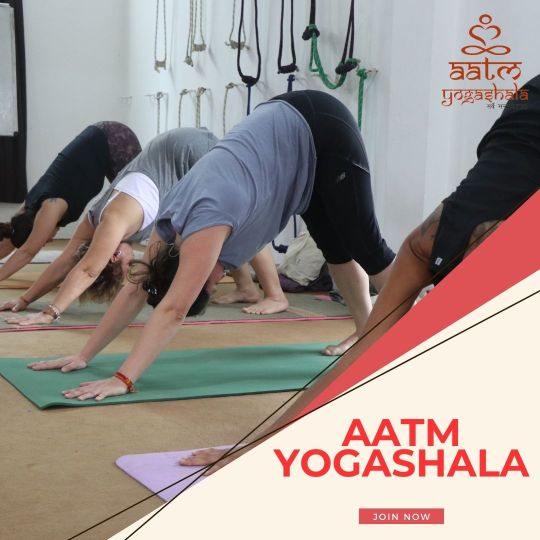
Yoga Teacher Training School in Rishikesh, India 100, 200, 300hr YTTC
#Yoga Teacher Training School in Rishikesh#India 100#200#300hr YTTC#Hatha#Ashtanga#Vinyasa#Iyengar#Asana#Yoga#Ayurveda#Meditation#Retreats#yoga#200houryogattc#yogainindia#yogateachertraining#yogainrishikesh#yogattc#yogacourses#yogainspiration#yogachallenge#yogavariation#yogahatha#yogajourney#yogaflow#yogacommunity#yogapractice#yogapractise#yogaforlife
0 notes
Link
If you are looking to learn all these Yoga poses then attend the best yoga school in Rishikesh and join yoga teacher training in Rishikesh.
#yoga school in rishikesh#yoga teacher training in rishikesh#ashtanga yoga retreat india#200 hour yoga ttc in rishikesh
0 notes